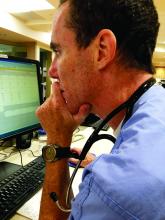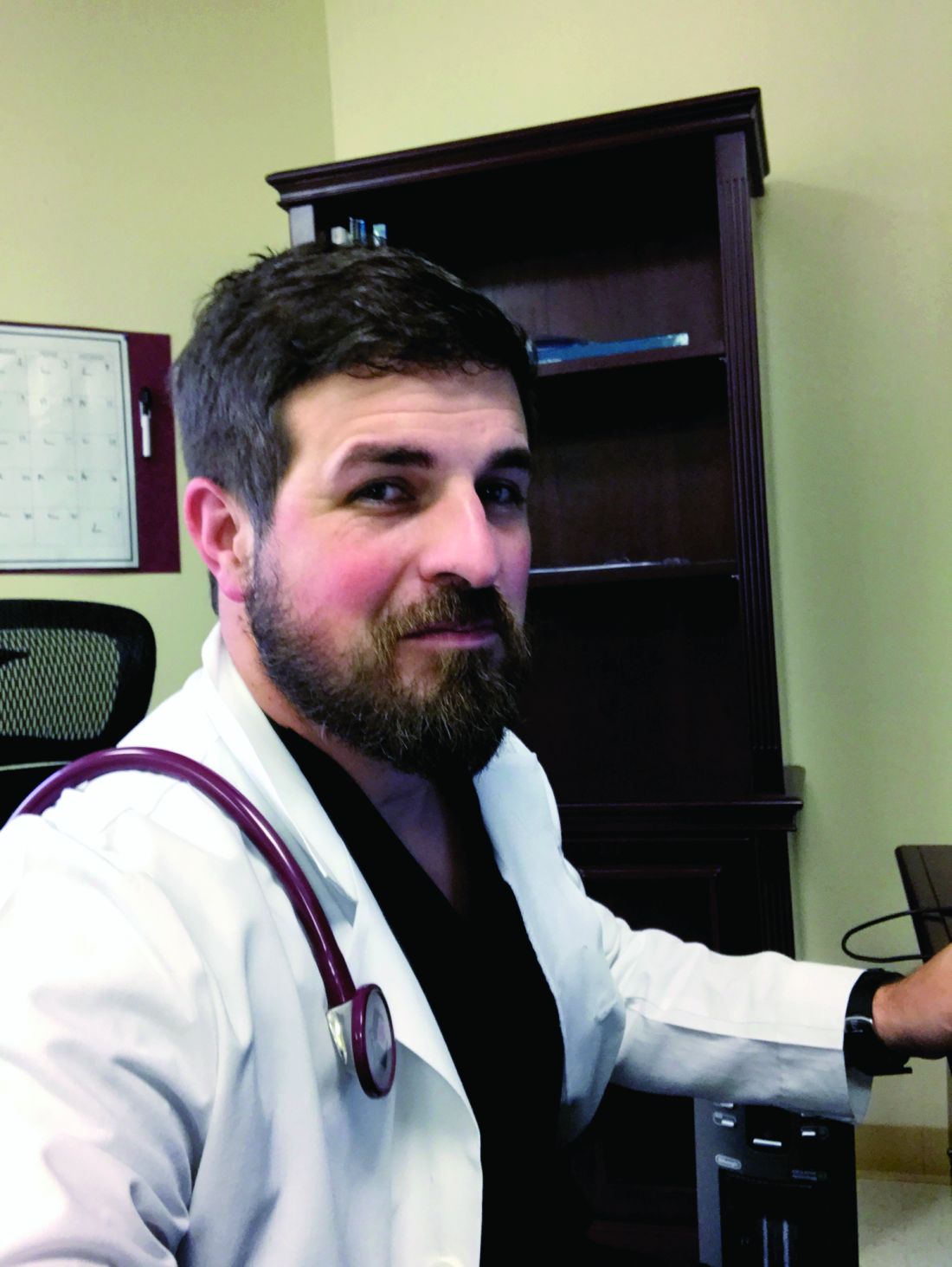User login
Bringing critical care training to hospitalists
It’s 9 p.m., and the ER calls you to admit a 60-year-old woman with COPD and multilobar pneumonia. She’s hypoxemic, intubated, and hypotensive after 3 L of crystalloid.
You’re asked to evaluate a patient who has developed stridor after an anterior cervical decompression and fusion. He seems to have responded to racemic epinephrine. Is he okay or not? What should you do next?
A patient develops dyspnea and chest pain after a total knee replacement. Chest CT shows extensive bilateral PE and a dilated right ventricle. She’s normotensive, but tachycardic and tachypneic. Now what?
Recognizing this growing phenomenon, SHM convened a task force of hospitalists and intensivists to quantify the problem and to develop tools and curricula to support hospitalists who provide critical care services. Our mission is make sure that every hospitalist who cares for critically ill patients has the skills and knowledge necessary to do so safely and competently. We’re working to define the scale and scope of the problem, advocate for hospitalists who provide critical care services, and develop educational content to fill gaps in knowledge and skill. We hope to offer a comprehensive but flexible critical care curriculum to meet the needs of hospitalists across the range of knowledge and skills.
When we can, we’ll leverage existing critical care courses and content and build that into our curriculum. When we can’t find material that is appropriate for hospitalists, we’ll develop our own. As a first step, we have produced targeted CME-eligible web-based education modules on the SHM Learning Portal covering high-risk clinical scenarios that hospitalists commonly encounter:
• Airway management for the hospitalist
• Noninvasive positive pressure ventilation
• Arrhythmias
• High-risk pulmonary embolism
This is an ambitious project, and we still have a long way to go. Have a scenario that we haven’t covered? Like what you see? We’d love to hear your feedback and ideas. Please contact [email protected].
Dr. Aymond is associate clinical professor of medicine at Louisiana State University, Alexandria, and a hospitalist ICU provider at Byrd Regional Hospital, Leesville, La., and Lake Charles (La.) Memorial Hospital. Dr. Siegal is adjunct clinical professor of medicine at the University of Wisconsin–Madison and an intensivist at Aurora Health Care.
It’s 9 p.m., and the ER calls you to admit a 60-year-old woman with COPD and multilobar pneumonia. She’s hypoxemic, intubated, and hypotensive after 3 L of crystalloid.
You’re asked to evaluate a patient who has developed stridor after an anterior cervical decompression and fusion. He seems to have responded to racemic epinephrine. Is he okay or not? What should you do next?
A patient develops dyspnea and chest pain after a total knee replacement. Chest CT shows extensive bilateral PE and a dilated right ventricle. She’s normotensive, but tachycardic and tachypneic. Now what?
Recognizing this growing phenomenon, SHM convened a task force of hospitalists and intensivists to quantify the problem and to develop tools and curricula to support hospitalists who provide critical care services. Our mission is make sure that every hospitalist who cares for critically ill patients has the skills and knowledge necessary to do so safely and competently. We’re working to define the scale and scope of the problem, advocate for hospitalists who provide critical care services, and develop educational content to fill gaps in knowledge and skill. We hope to offer a comprehensive but flexible critical care curriculum to meet the needs of hospitalists across the range of knowledge and skills.
When we can, we’ll leverage existing critical care courses and content and build that into our curriculum. When we can’t find material that is appropriate for hospitalists, we’ll develop our own. As a first step, we have produced targeted CME-eligible web-based education modules on the SHM Learning Portal covering high-risk clinical scenarios that hospitalists commonly encounter:
• Airway management for the hospitalist
• Noninvasive positive pressure ventilation
• Arrhythmias
• High-risk pulmonary embolism
This is an ambitious project, and we still have a long way to go. Have a scenario that we haven’t covered? Like what you see? We’d love to hear your feedback and ideas. Please contact [email protected].
Dr. Aymond is associate clinical professor of medicine at Louisiana State University, Alexandria, and a hospitalist ICU provider at Byrd Regional Hospital, Leesville, La., and Lake Charles (La.) Memorial Hospital. Dr. Siegal is adjunct clinical professor of medicine at the University of Wisconsin–Madison and an intensivist at Aurora Health Care.
It’s 9 p.m., and the ER calls you to admit a 60-year-old woman with COPD and multilobar pneumonia. She’s hypoxemic, intubated, and hypotensive after 3 L of crystalloid.
You’re asked to evaluate a patient who has developed stridor after an anterior cervical decompression and fusion. He seems to have responded to racemic epinephrine. Is he okay or not? What should you do next?
A patient develops dyspnea and chest pain after a total knee replacement. Chest CT shows extensive bilateral PE and a dilated right ventricle. She’s normotensive, but tachycardic and tachypneic. Now what?
Recognizing this growing phenomenon, SHM convened a task force of hospitalists and intensivists to quantify the problem and to develop tools and curricula to support hospitalists who provide critical care services. Our mission is make sure that every hospitalist who cares for critically ill patients has the skills and knowledge necessary to do so safely and competently. We’re working to define the scale and scope of the problem, advocate for hospitalists who provide critical care services, and develop educational content to fill gaps in knowledge and skill. We hope to offer a comprehensive but flexible critical care curriculum to meet the needs of hospitalists across the range of knowledge and skills.
When we can, we’ll leverage existing critical care courses and content and build that into our curriculum. When we can’t find material that is appropriate for hospitalists, we’ll develop our own. As a first step, we have produced targeted CME-eligible web-based education modules on the SHM Learning Portal covering high-risk clinical scenarios that hospitalists commonly encounter:
• Airway management for the hospitalist
• Noninvasive positive pressure ventilation
• Arrhythmias
• High-risk pulmonary embolism
This is an ambitious project, and we still have a long way to go. Have a scenario that we haven’t covered? Like what you see? We’d love to hear your feedback and ideas. Please contact [email protected].
Dr. Aymond is associate clinical professor of medicine at Louisiana State University, Alexandria, and a hospitalist ICU provider at Byrd Regional Hospital, Leesville, La., and Lake Charles (La.) Memorial Hospital. Dr. Siegal is adjunct clinical professor of medicine at the University of Wisconsin–Madison and an intensivist at Aurora Health Care.


